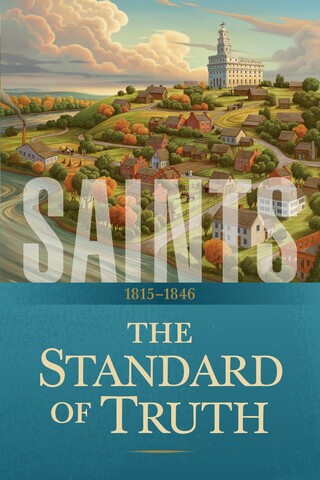The history of The Church of Jesus Christ of Latter-day Saints is full of beautiful moments. The First Vision, the coming forth of the Book of Mormon, the organization of church meetings, and the restoration of temple ordinances are all just a few examples of moments from our history that impacted the world.
However, as with all histories, there are moments that were not beautiful. In fact, there are moments in our history that have caused many to doubt the truthfulness of the gospel. So do we avoid studying Church history for fear that it will cause us to doubt as well?
Or is it that we arm ourselves with tools to help us discover and understand our past?
► You'll also like: 20 Things You Didn’t Know About Church History
"My boss for a long time was Rick Turley, and he would always say, 'The problem is not Church history. The problem is not reading enough Church history,'" Latter-day Saint historian Dr. Janiece Johnson says in an LDS Living All In podcast.
As Latter-day Saint historians Dr. Jenny Reeder and Johnson discuss in the podcast, history is often messy, but there are valuable lessons to be learned from the past. To help Latter-day Saints navigate studying Church history, Reeder and Johnson mention a few things members need to take in consideration.
1. Understand the context.
Reeder says often we look at Church history through a lens of presentism, meaning we look at the past with a 21st-century point of view. Instead, we should try to understand the context surrounding Church history events.
For example, Reeder discusses early Church polygamy and how the women of the Church at the time had to develop their own testimonies and witnesses of plural marriage because it was so grating to their time and culture.
"Part of me is really grateful that I didn't have to be there and when the clipboard was passed around in heaven, I did not sign up for Nauvoo," Reeder says. "But part of me is completely respectful of them and their experiences, and I believe them and I recognize the torment they had to go through, but I also recognize the power of personal revelation."
► You'll also like: 8 Fascinating Women from Church History (+ Other Church Leaders)
2. Know the source.
Reeder says, as historians, she and Johnson are trained to be very careful when it comes to sources. Knowing who the source is and the time period they lived in can greatly impact the way facts are presented and the overall tone.
"There's no such thing as an objective history," Reeder says. "It's always subjective. You're always looking at it from a specific lens. But if you can recognize who's talking, who's giving the sources, who's giving the facts even, you recognize that there are some kind of biases."
In the podcast, Reeder shares an experience where she came across some material about Joseph Smith and plural marriage that she hadn't seen before.
"I was sitting there and it was like my mind was being blown," Reeder says. "I was completely disgusted. I was like, 'What is this?'"
Reeder says when she has these moments and she prays about it and tries to use a historian's lens, she realizes that she is looking at history with a presentist's point of view or she looks at the source and finds they could be someone who wrote what they did to defame the Church or its leadership.
"I actually think the study of history has allowed me to recognize sources and to recognize content and to recognize bias and to recognize the need for me to find out for myself and to pray for myself," Reeder says.
Both Reeder and Johnson suggest that if members are looking for sources about Church history that they begin with a book likeSaints and the sources the book uses, along with the Gospel Topics Essays.
"That is a good jumping off place," Reeder says. "Once you understand some of the foundation, you can dig in deeper wherever you are interested."
3. Real life is messy.
"Real life is messy, and understanding the past is a foreign place and it's going to take the ability to deal with some messiness to be able to really understand what has happened in the past," Johnson says in the podcast.
Having worked for 10 years researching the Mountain Meadows Massacre, Johnson is no stranger to the messy side of history.
"When we are dealing with human beings who are limited and mortal, there is going to be messiness," she says. "And I believe that if we approach the messiness head on, there is strength and power in that. The gospel will still be true. . . . As I am methodical, as I lay things out, as I try to understand and I always use the Spirit as a guide, I'm going to be okay."
Reeder also says that seeing the messiness in Church history has helped her in her personal life.
"Seeing this messiness in these people's lives from our past helps me realize that my messiness in my life is okay," she says. "I read these women's stories to know that I am not alone."
Listen to the full podcast below:
Lead image from Getty Images
The Standard of Truth is the first book in Saints, a new, four-volume narrative history of The Church of Jesus Christ of Latter-day Saints. Fast-paced and meticulously researched, Saints recounts true stories of Latter-day Saints across the globe and answers the Lord's call to write history "for the good of the church, and for the rising generations" (Doctrine and Covenants 69:0). 699 total pages including notes and maps.




